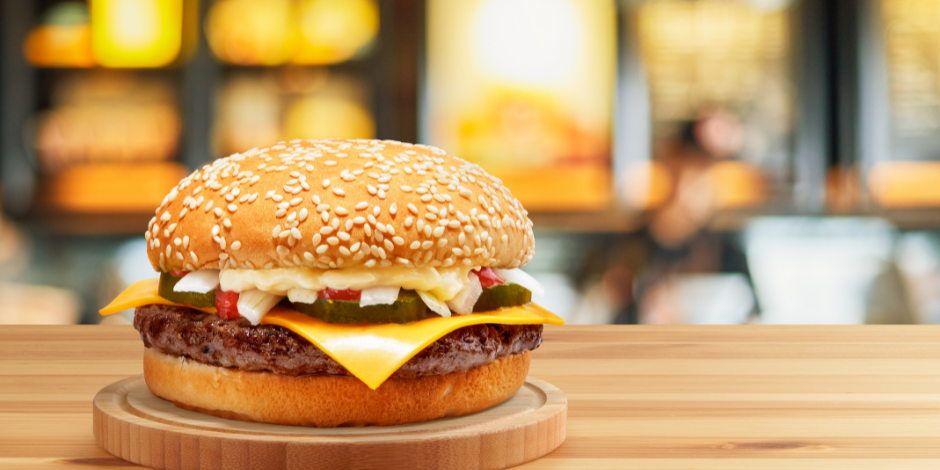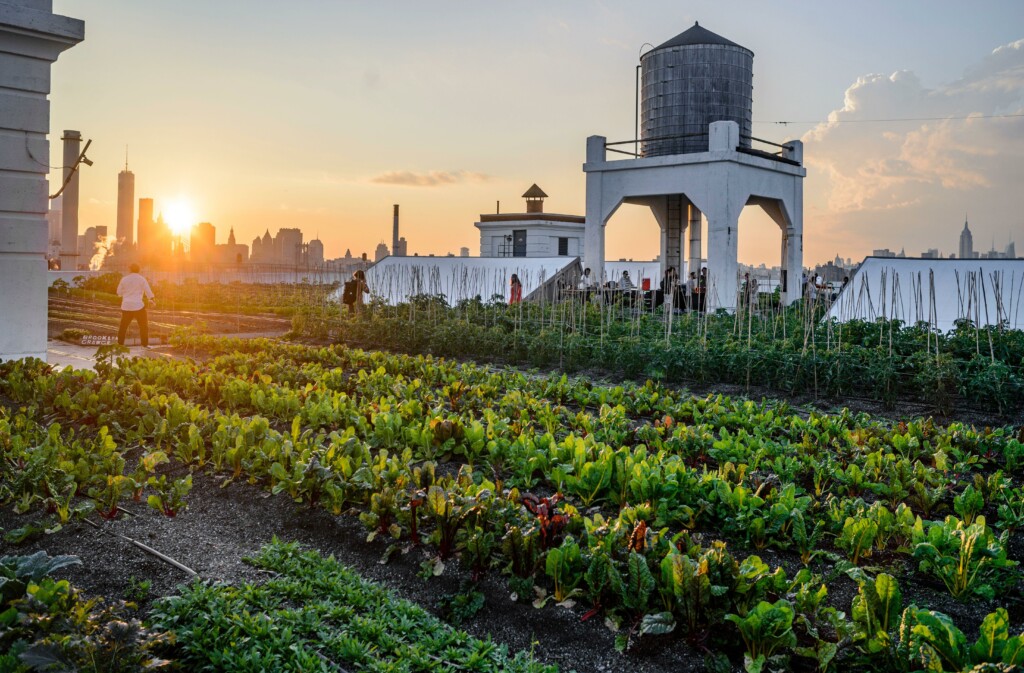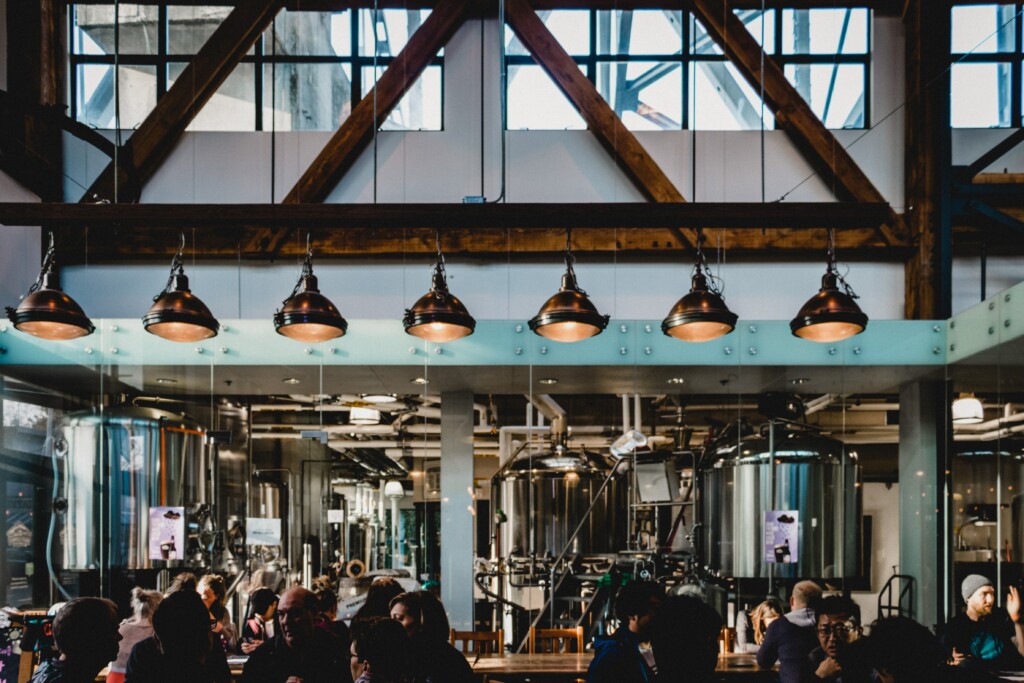How a McDonald’s burger can become a foodies' “best meal”
When it comes to food the who, where, when and how are all just as important as the what – the food. This context can transform our experiences and transform a mundane burger into the ‘best meal ever’. But in a post COVID-19 world, digital technologies are challenging how we engage and experience food. Globally renowned food innovation expert, Mike Lee explores the rise of the digital food revolution and how the food industry can double down to create memorable, real-life food experiences.
 A McDonald's Big Mac. Coupled with emotion a simple Big Mac and a fast food experience can be transformed into the best meal ever.
A McDonald's Big Mac. Coupled with emotion a simple Big Mac and a fast food experience can be transformed into the best meal ever.
When I was a teenager, I distinctly remember a moment at the dinner table with my parents, and a few of their friends. After the dishes had been cleared and the adults were finishing their drinks and conversation, one of the guests posed a question to the table, “what was the best meal you’ve ever had?”
My parents’ friends each took turns reminiscing about their most memorable and opulent meals, often at white tablecloth restaurants with old French wines served by waiters in tuxedos.
Then it was Al’s turn to speak. Al was an investment banker who had served in the military during the Vietnam War and was honourably discharged after being injured in combat.
Without hesitation he said, “McDonald’s. Big Mac, fries, and a Coke. That was my best meal ever.” Everyone at the table was puzzled and fell silent in anticipation of what Al had to say next to justify his answer.
“The war was terrible. I was so happy to be home and the first thing I did when I got back was go to McDonald’s. That was easily the best meal I ever had because it felt like home.”
I didn’t know what to make of that answer at the time, but it stood out and now after 30 plus years, I don’t recall anything anyone else at that table said about their “best meal ever”, except for Al.
When it comes to food, context is everything. The context of how, when, where, with whom, and why you are eating something is powerful enough to supersede what you are actually eating. This is what defines our eating experiences and those memorable experiences linger in our hearts and compel us to seek out more of them. Experience is what turns a mundane burger from McDonald’s into the greatest meal you ever had.
Analog food in a digital world
In a post COVID-19 world, the way we approach our food is changing. In grocery stores, where we previously walked the aisles and were tempted by the products that brands paid stores to display prominently, the momentum is now behind the act of finding and buying your grocery items on a smartphone or computer screen.
RELATED: Sustainable global consumer trends and what it means for farmers

Ordering food online – via our phones or laptop – offers restaurant quality food in the convenience of your home or office. Photo by charlesdeluvio via Unsplash
In restaurants, where we simply walked in, sat down, and ordered food, but the momentum is behind the act of finding and buying your meals on a smartphone or computer screen.
The screen is the new way we find our food and it is training us to expect access to any food, at any time, no matter where we are, as long as a screen is nearby. This digital transformation is not new, but the COVID-19 pandemic accelerated it greatly.
RELATED: Insight – Post-COVID-19 consumer food trends in Asia
With the digital food experience now unavoidable, the case for in-real-life (IRL) food experiences has never been greater. Digital grocery shopping trades away the ability to touch, smell, and taste our produce before we buy in exchange for convenience. Ordering take out for dinner from your phone robs you of the opportunity to feel the energy and vibe of a lively bistro in exchange for not having to leave the house and change out of your pyjamas for dinner.
72% of millennials and Gen Z-ers value experiences (both IRL and digital) over things opting to spend money on these experiences, rather than material possessions.
The choice between a digital and IRL food experience will co-exist in the future, but it means that those in the ‘IRL food experience’ business need to work harder to justify people leaving the house.
The big question is: how can the food industry double down on creating memorable, real-life food experiences in a world where all food can be digitally interacted with?
Farm to people
It goes without saying, a farmer can tell you what really goes into growing food as they have an innate connection with their product. Even a home gardener will gain a profound appreciation for where food comes from to the point where they look at an everyday tomato differently. This deeper knowledge of the process can be a life-changing education that moves us to rethink our food choices and to be more mindful of how our food impacts our ecosystem and our bodies.
As our population increases, and the global trend toward city living increases, it is becoming harder and harder for a meaningful population of eaters to connect with their food. Few have the opportunity to spend time on farms or to grow their own food. The pandemic lockdown forced us to get to know our food more intimately, as we were forced to stay home and cook more than we are used to, but most of the developed world’s citizens still remain very disconnected from how their food is made.

Brooklyn Grange, a rooftop farm in New York City, United States of America
Brooklyn Grange a rooftop farm in Brooklyn, is not a traditional farm by any means, but has the advantage of being right in the urbanite’s backyard. The farm grows and sells its produce while also providing ample opportunities for people to visit for dining events and educational experiences. The fact that this farm has existed and thrived for over a decade in New York City suggests that urbanites do want to experience where their food comes from, but it must be easy for them. If you can’t bring every eater to a farm, then why not bring pieces of farming life to them?
Experiencing where your food comes from or seeing it being made enhances trust.
Even if a farm visitor never returns, if the experience was sufficiently positive (or negative), they will hold that experience in their heads and mentally whitelist (or blacklist) the food they witnessed being grown in their mind for a long time.
We are creatures of habit and it’s simply unheard of that a food shopper would reassess their opinion on a food item every single time they buy it. You stick with what you know and trust. Once you earn (or lose) that trust, that’s it.
RELATED: Your Food Collective connects growers with future-focused consumers
Not to be outdone, the “farmless” farming industry also has their sights set on bringing consumers into their growing experience. Many cell-based protein companies tout that their product can be made in a large vessel not unlike a beer brewing one. And after witnessing the rise of the craft beer movement over the last 20 years, it’s a logical assumption that cultivated meat companies will follow suit building restaurants and/or bars inside of their cell cultured meat bioreactor factory, just like 1000s of breweries did.

A craft brewery and restaurant. Photo by Carlos Blanco via Unsplash
RELATED: Vow’s path to success and the rise of cultured proteins
Despite the differences between traditional protein production and the lab-grown meat industry may be, they both seem to implicitly agree on one thing: allowing the eaters to experience food production — whatever that may be — is a good way to build a relationship with the end customer. Maybe this happens in a real life, physical meat bioreactor facility, or even in the Metaverse? Time will tell.
But even if all of these farm tours happen in the Metaverse, you’ll still never be able to eat a meal of pixels from your VR headset. Food is physical and will always be. At best, the digital experience can act as a concierge to guide you to the food you want, but the food itself will never be digitised.
Digitally connected dining experiences
Pioneers in the dining world like the Flyfish Club are taking the best of both digital and physical worlds to create a dining and social experience that is unlike any other. Flyfish Club is a members only social and dining club that uses Non-Fungible-Token (NFTs) as their infrastructure for membership. Dinners must own one of their NFTs to be invited to their events and they have used the unique features of NFTs as the glue that helps connect their community.
Flyfish Club and other social clubs like it realise that experience is the ultimate currency. In a world where we can digitally call on any food we want, and have it dropped at our doorsteps, they realise that the ultimate experience is human connection. Even as our dining experiences are getting more automated we are hardwired as a human race to crave and seek connection with others.
Food is both logical and emotional, often with the latter taking control.
Which explains our friend Al. Food’s nutrition and healthfulness speak to our logic, but the experience and story that envelops the food is what hits us with emotion. Our industry needs to continually focus on innovating to find new ways to create food experiences that profoundly connect with our emotions.
And that is exactly how a McDonald’s burger can become a foodies’ best meal ever.
Read more of Mike Lee’s opinion pieces about the future of our food system here.
Enjoyed this story? Want to learn more about the Asia Pacific region’s innovative agrifood tech ecosystem? Sign up for our newsletter here and receive fresh stories about global leaders, farmers, startups and innovators driving collaborative change.
